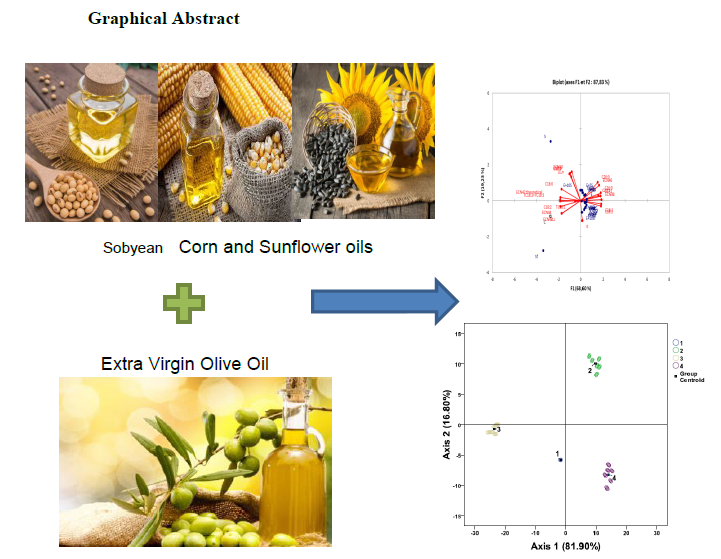Nowadays, the fingerprinting methodologies of olive oils are dominated. They consider the entire analytical signal, which is acquired and recorded by the analytical instrument, directly from olive oil or isoleted fraction, i,e chromatogram. The shape and intensity of the recorded signal the instrumental fingerprint from the whole olive oil adulteration. Therefore, the methodolygy is based on the chemical composition (Fatty acids and Triglycerides compositions). However, Fatty acids composition as an indicator of purity suggests that linolenic acid content could be used as a parameter for the detection of extra virgin olive oil fraud with 5% of soybean oil. The adulteration could also be detected by the increase of the trans-fatty acid contents with 3% of soybean oil, 2% of corn oil and 4% of sunflower oil. The use of the ∆ECN42 proved to be effective in the Chemlali extra-virgin olive oil adulteration even at low levels: 1% of sunflower oil, 3% of soybean oil and 3% of corn oil. Therefore, compared to classical methods PCA and new approach of using LDA application could represent an alternative and innovative tool for faster and cheaper evaluation of extra-virgin olive oil adulteration.

